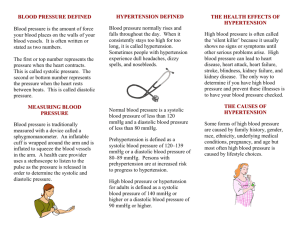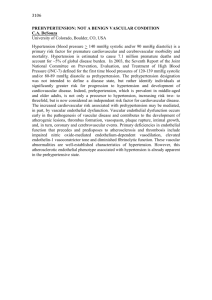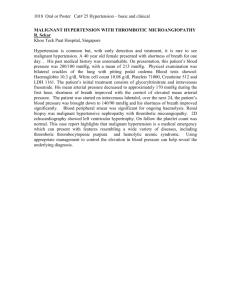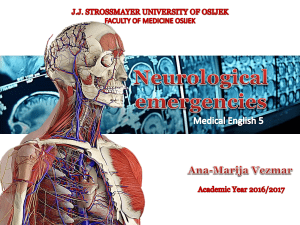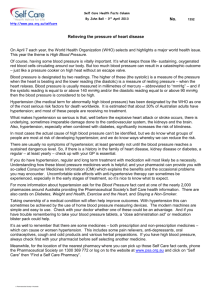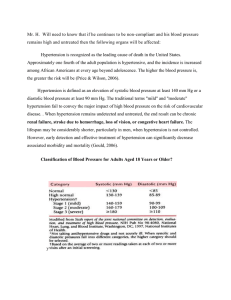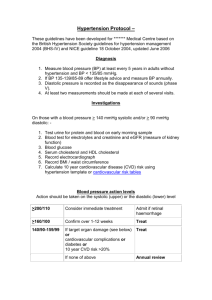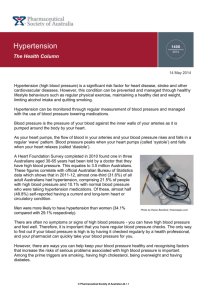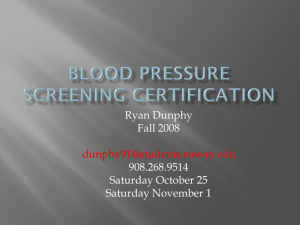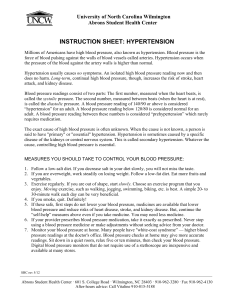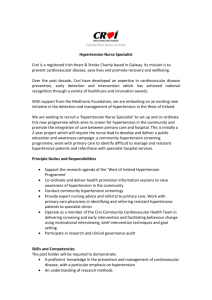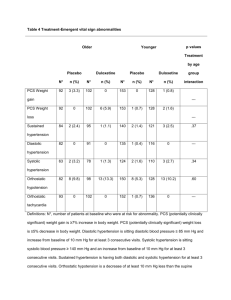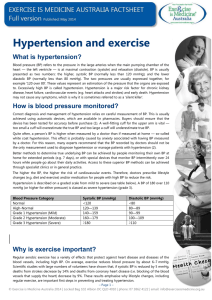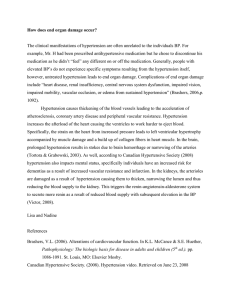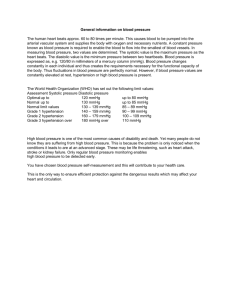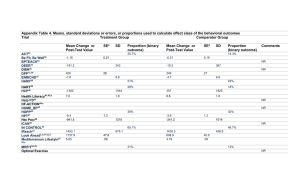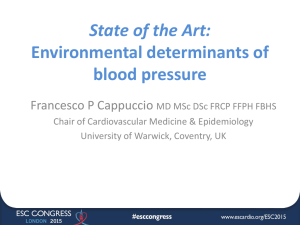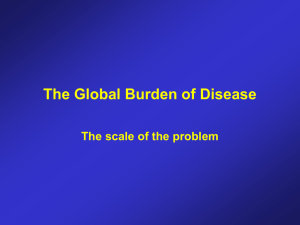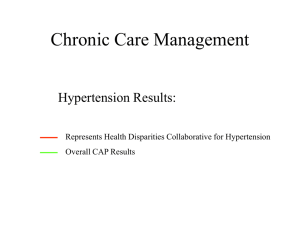Basic Outline for Hypertension I. Definition: a. A common disorder
advertisement
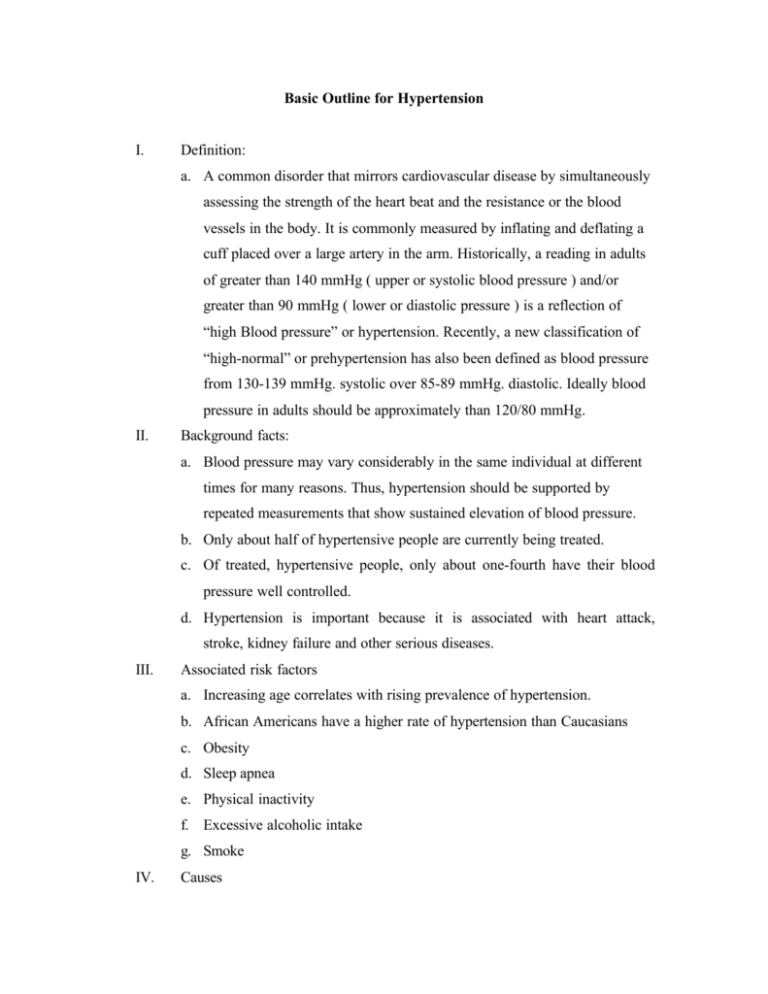
Basic Outline for Hypertension I. Definition: a. A common disorder that mirrors cardiovascular disease by simultaneously assessing the strength of the heart beat and the resistance or the blood vessels in the body. It is commonly measured by inflating and deflating a cuff placed over a large artery in the arm. Historically, a reading in adults of greater than 140 mmHg ( upper or systolic blood pressure ) and/or greater than 90 mmHg ( lower or diastolic pressure ) is a reflection of “high Blood pressure” or hypertension. Recently, a new classification of “high-normal” or prehypertension has also been defined as blood pressure from 130-139 mmHg. systolic over 85-89 mmHg. diastolic. Ideally blood pressure in adults should be approximately than 120/80 mmHg. II. Background facts: a. Blood pressure may vary considerably in the same individual at different times for many reasons. Thus, hypertension should be supported by repeated measurements that show sustained elevation of blood pressure. b. Only about half of hypertensive people are currently being treated. c. Of treated, hypertensive people, only about one-fourth have their blood pressure well controlled. d. Hypertension is important because it is associated with heart attack, stroke, kidney failure and other serious diseases. III. Associated risk factors a. Increasing age correlates with rising prevalence of hypertension. b. African Americans have a higher rate of hypertension than Caucasians c. Obesity d. Sleep apnea e. Physical inactivity f. Excessive alcoholic intake g. Smoke IV. Causes V. VI. VII. VIII. a. Essential or primary hypertension has no known explanation (94% of cases) b. Chronic renal (kidney) disease (5%) c. Other causes (1%) Signs and Symptoms a. Unfortunately, uncomplicated hypertension is almost always asymptomatic, even though slowly progressive cardiovascular damage may be occurring during this period. b. Classic symptoms are non-specific; they include headache, tinnitus (ringing in the ear), dizziness and fainting. Early screening tests a. Blood pressure recording at your doctor’s office or out of office measurements. Diagnosis a. Blood pressure measurement b. Funduscopic (eye) examination by physician c. Urine analysis d. Electrocardiogram (ECG) Treatment a. Initial therapy: “life style modifications” • Exercise • Avoid tobacco • Lose weight • Restrict sodium (salt) in diet • Reduce alcohol intake b. antihypertensive drug therapy • Single Drug • Multiple Drugs (increasingly common)
